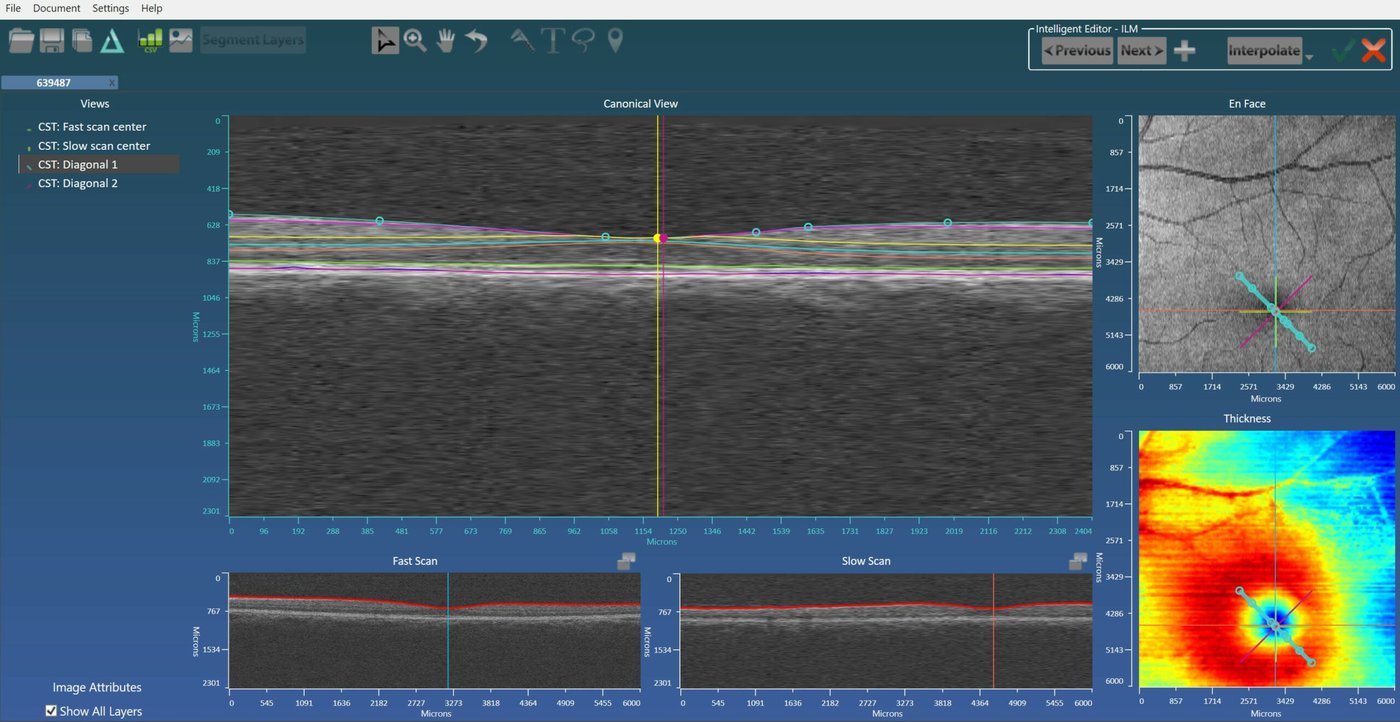A Growing IP Portfolio in Further Support of Reading Center Workflows
Within the context of clinical trials, the analysis of optical coherence tomography (OCT) images can be a time consuming process. Data files that can be as large as a Gigabyte must be moved around, anonymized and loaded into different analysis tools depending on the format. Once segmented, the boundaries of each layer must be manually adjusted so as to complete the read and ensure the reported endpoint is correct. The further the automated result is from the actual boundaries, the longer it takes to correct these. Worse still, the algorithm is different for each device and so too is the editing tool, so results across devices are incompatible. And there’s usually more than one reader, and perhaps an arbitration process…
Orion addresses all of these things:
- Has best in class automated segmentation
- Has best in class editing tools
- Works across all OCT devices
- And supports multiple, blinded reader workflows
In addition to that, and based now on another recently awarded patent, Voxeleron is pleased to announce that the two main components of the reading center pipeline are both fully patented:
- The segmentation engine
- The intelligent editing tool
So regardless of the OCT device, Orion can read and segment the data with the same patented segmentation algorithm. Based on configuration settings, Orion can hide the personal information. Based on proven best-in-class segmentation software, Orion minimizes the edits that are required to complete a read; in some cases, none are required. The editing software is fast and intuitive, and maximizes the editing coverage while minimizing the user interactions. We even have a specific pattern for editing the central subfield, if that is the only required measurement area.
In retrospect, the approach to presenting the user just the views they need to edit and then propagating their edits seems obvious. But in reducing this to practice it was found to be so useful it made sense to pursue the patent. Our use of canonical views that are planar but not-axis aligned and/or non-planar is now part of Voxeleron’s intellectual property portfolio, applicable to any imaging modality.

To learn how Orion enables AI-backed analysis, provides interoperability in ophthalmic image analysis, and reduces read times with automated measurements, visit voxeleron.com or get in touch to request a demo.
